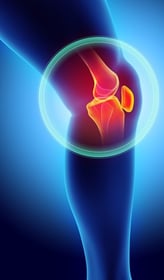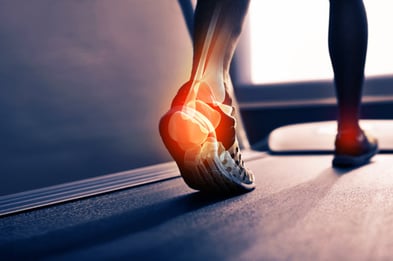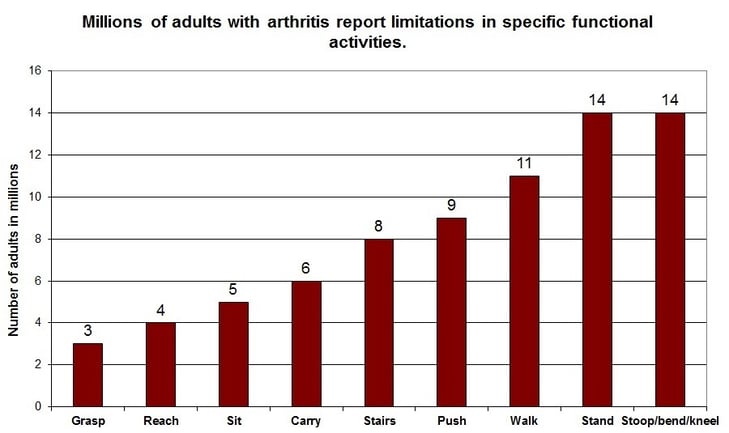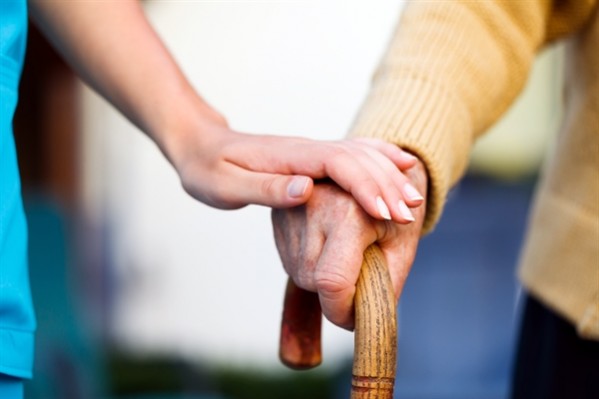Many seniors living in Cincinnati suffer from arthritis. The chronic pain and reduced mobility associated with it can be hard to manage.
Arthritis is a general term for degenerative changes in the body’s joints. There are many types of arthritis, with various causes. Some types are caused by mechanical wear and tear over time; others are caused by inflammatory conditions, infectious or genetic diseases, or even (in the case of gouty arthritis) poor nutrition.
Opioid painkillers are a poor management tool for arthritis pain
Many seniors rely on prescription narcotics to manage their chronic arthritis pain. It’s common, but not ideal. Opioids don’t manage the cause of arthritic pain; they only mask it. And they can cause other, serious medical problems.
The solution is to learn to manage your pain and mitigate the factors that make it worse.
First, narcotic painkillers can cause severe constipation, so chronic opioid use puts older patients at risk of bowel obstructions, intestinal infections, gastrointestinal bleeding and other painful, sometimes life-threatening medical complications.
Second, narcotic medications interact poorly with other medications that seniors commonly use — allergy relief medications, sleep aids, anti-anxiety and antidepressant medications, anticholinergics and more — which puts older people at increased risk of fall-related injuries, delirium episodes, or even cardiopulmonary arrest.
 Third, opioids are highly addictive. A senior can become desensitized to (and dependent) on them, requiring larger and larger doses to attain the same perceived level of pain relief. Larger doses lead to more side effects and more adverse drug interactions.
Third, opioids are highly addictive. A senior can become desensitized to (and dependent) on them, requiring larger and larger doses to attain the same perceived level of pain relief. Larger doses lead to more side effects and more adverse drug interactions.
Lastly, opioids have a high street value and, in the midst of the narcotic addiction epidemic here in the Tristate, their presence in the home can put a senior at increased risk of being victimized.
So what is an arthritis sufferer to do? Because arthritic changes are degenerative, they can never fully go away. The solution is to learn to manage your pain and mitigate the factors that make it worse. Luckily, there are ways to do so without relying too heavily on strong painkillers.
Staying active, exercising regularly and maintaining a healthy diet could be important for easing your long-term symptoms.
1. Keep it moving
It might seem counterintuitive, but arthritic pain you experience when moving your joints might be alleviated by . . . moving your joints.
“Movement is free medicine,” said Jim Fisk, Episcopal Retirement Services’ Director of Wellness, “especially when it comes to arthritis.”
Massage is one a management tool that can increase blood flow and range of motion in damaged joints. And low-impact cardiovascular exercise promotes the release of synovial fluid, which lubricates and nourishes joints.
“Walking in place, or bending and straightening the knees off the side of the bed first thing in the morning helps to warm up stiff joints,” Fisk advised.
2. Protect your joints
Any good auto mechanic will tell you that the key to long-term performance is preventative maintenance. If you treat your car poorly — putting off oil changes, letting it sit in the garage without turning the engine over, overloading it and overtaxing the engine — its parts will wear down and fail quicker.
 Your body functions the same way. If you live a sedentary lifestyle, a time will come when you will need to exert yourself and, being atrophied and unused to stress, your joints will ache and creak. Knees will buckle. A sore back will keep you awake.
Your body functions the same way. If you live a sedentary lifestyle, a time will come when you will need to exert yourself and, being atrophied and unused to stress, your joints will ache and creak. Knees will buckle. A sore back will keep you awake.
The answer? Strengthen and tone your muscles. As a senior, regular exercise may be the single best method for improving your overall health and maintaining your vitality.
Talk with your doctor or a physical therapist about developing a simple exercise program. Once you start exercising, stick with it!
Outdoor walks, water exercise at your local YMCA or community pool, ballroom dance classes are all low-impact activities that will keep your joints loose and limber. They’re also excellent opportunities to make friends, have fun and stay social.
3. Reduce the physical stress on your body
No matter how strong your muscles are, if you’re overweight, you’re putting undue stress on your joints. Excess weight also causes chronic, low-level inflammation throughout your body, so it can make worse the arthritic processes going on around your joints.
If you’re overweight, it’s time to start eating right. Consult a nutritionist or weight-management counselor can help you become more conscious of your dietary choices and assist in meal planning.
4. Heat ‘em up, cool ‘em down
Alternating hot and cold therapies can also help to alleviate some types of arthritis pain.
“Sitting in a hot tub or sauna, or using a heated seat back can warm up stiff joints in the beginning of the day,” Fisk said.
But it’s important to check with one’s doctor first, as are a few types of arthritis for which heat therapy isn’t recommended. Rheumatoid arthritis symptoms, for example, can be worsened by the application of heat.
For all types of arthritis, though, cold therapy can be a wonderful pain management tool at the end of the day or after activity. Applying ice can reduce swelling and dull pain in arthritic joints.
 (Source: CDC National Statistics)
(Source: CDC National Statistics)
5. Eat the right things
Your bones need calcium and phosphorus replenishment to remain strong. If you are not getting enough of these nutrients in your diet, your body will leach them out of your bones, which in turn become porous and brittle. This condition, osteoporosis, is painful and dangerous, as it makes bones susceptible to fracture.
Osteoporotic changes often contribute to worsening arthritic pain. As the structures of the bones adjacent to an already-arthritic joint weaken, connective soft tissues like ligaments, tendons and discs must bear more mechanical stress, so they can become even more inflamed.
Calcium is most readily available in dairy products. These foods can be high in fat, so you may want to choose lower fat dairy options such as skim milk, cottage cheese and reduced-fat yogurt.
Phosphorus is available in meat and dairy products; again, choosing leaner options is wise. Excellent plant-based nutritional sources for bone health include:
• Nuts and plant seeds
• Peas
• Kale, mustard and collard greens
• Broccoli
• Oranges
• Soy-based products, such as tofu or soy milk
• Almond milk and almond yogurt
6. Give your joints the proper support
Another way to reduce undue mechanical stress on your joints is to use orthopedic supports. Simple bandage wraps, knee and elbow braces may be purchased over-the-counter at any pharmacy.
Use them while you exercise. By bracing weaker or lax ligaments and tendons, you can minimize wear-and-tear injuries as you build musculoskeletal strength.
Outside your wellness program, you may need to make other changes to make life with arthritis easier. If you experience pain when walking, you might consider wearing fitted orthopedic inserts or support shoes. Check with your health insurance provider — their purchase price may be covered.
You might also talk with your primary care doctor about getting a referral to an orthopedist for specialized management of your arthritis, or to an occupational therapist who can help you find less physically-taxing ways to perform your daily tasks.
Manage your arthritis the right way. Treat your joints well.
If you’re a senior in Cincinnati who is living with arthritis, use the strategies above to strengthen up and avoid dependence on painkillers. Arthritis pain may be limiting, but it doesn’t have to shut you down!













